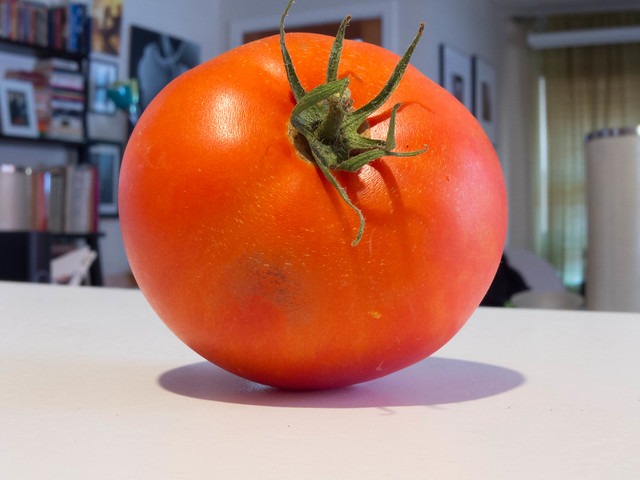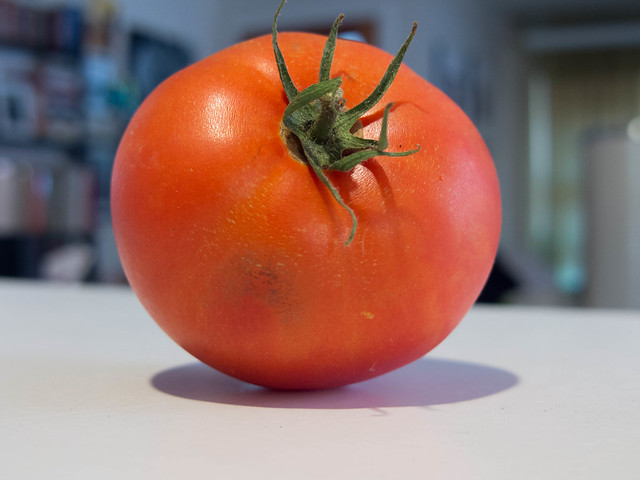It’s just one tomato, actually, but “A Tale of One Tomato Photographed a Number of Times” just didn’t roll off the tongue. So here’s a couple of shots with the Pentax Q.
This is 1/6s @ F2.5. I’m bracing the camera against the countertop, but still, this isn’t bad – you can still see the fine detail in the stem.
And here’s the second (erm…still the first and only, just shot differently):
This is very very good for a handheld 2s exposure. I’m bracing the Q against the countertop, but still, this exposure was 2 whole seconds!
Not only that, but this is shot at F8, way beyond the point where the little Q sensor is supposed to be overwhelmed by diffraction effects. Still looks pretty sharp. And trust me, you can still see the detail in the stem, the fine hair-like structures in the green stem are still very distinct.
Now I won’t argue that diffraction doesn’t exist or affect photos; I took enough college physics to know better. But I think that pixel peepers make too much of it sometimes, implying that stopping down into diffraction territory is like falling off an image quality cliff and that you might as well coat the objective element in vaseline if you are going to stop down too much. As this very lucious tomato shows, that just ain’t true.
So far, I’ve been pleasantly surprised with the IQ of the Q. I won’t be putting the K-5 up on eBay anytime soon, but my general impression is that the Q is a step above the last small sensor compacts I have shot with (Canon G9 and Ricoh GX100) and much sharper than my wife’s Panasonic TS3 rugged camera. Initial feedback on AF is that it is point-and-shoot territory, and I’ve toyed around a little with the Intervalometer (why I got the Q in the first place).
The 01 Prime lens is quite good. The 03 Fish Eye is a step down. The real test will be – can I get sharp photos with the 03 Fish Eye mounted to a moving motorcycle? We shall see…

